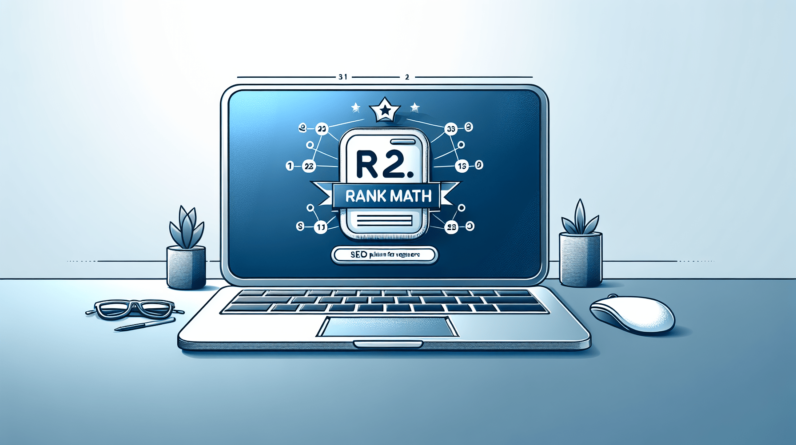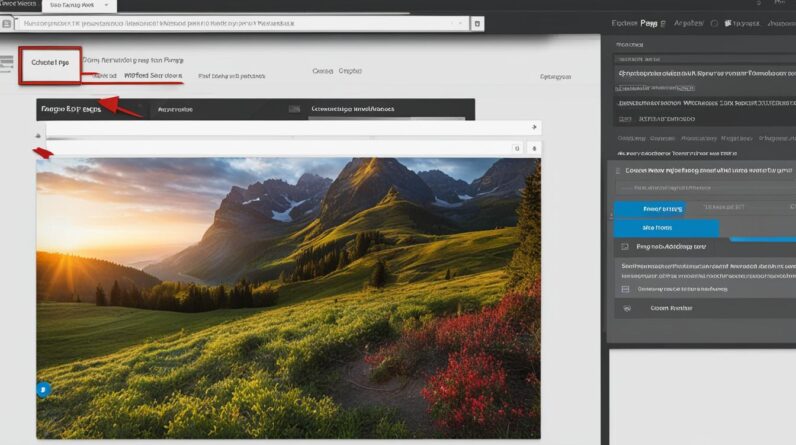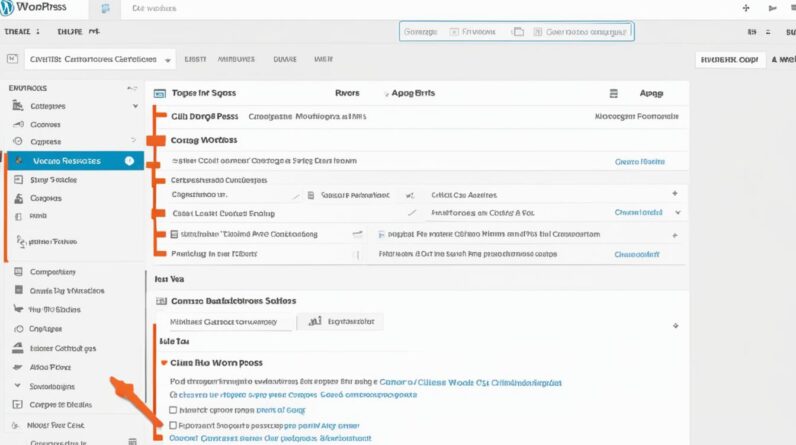Moving a WordPress site to a new host can be a daunting task, but with the right steps, it can be done easily and without any downtime. In this guide, I will walk you through the process of safely migrating your WordPress site to a new host. We will cover everything from choosing a new host to updating your domain name servers. By following this guide, you will be able to move your WordPress site seamlessly and without any loss of data or downtime.
How to Make Money with YouTube
Create an empire of automated video websites for multiple streams of income
Key Takeaways:
- Follow these step-by-step instructions to migrate your WordPress site to a new host without downtime or data loss.
- Choose a reliable hosting provider that meets your specific needs, such as Bluehost, Hostinger, SiteGround, or WP Engine.
- Install and activate the Duplicator plugin to simplify the migration process.
- Upload the installer.php and archive.zip files to the root directory of your new host using an FTP client.
- Change the hosts file on your computer to temporarily access your new site before updating the domain name servers.
Choose Your New WordPress Host
When it comes to moving your WordPress site to a new host, one of the first decisions you’ll need to make is which hosting provider to choose. This is a crucial step as it will determine the performance, reliability, and overall success of your website. With so many options available, it’s important to find the best WordPress hosting provider that meets your specific needs.
Here are some of the top WordPress hosting providers:
Bluehost
Bluehost is a reliable and popular hosting provider known for its excellent customer support and uptime. They offer various hosting plans, including shared hosting, which is perfect for small to medium-sized websites.
Hostinger
Hostinger is a budget-friendly option that doesn’t compromise on performance. They provide faster shared hosting with solid security features and excellent loading times. Hostinger is a great choice for individuals or businesses looking for affordable hosting solutions.
SiteGround
SiteGround is renowned for its exceptional performance and top-notch customer support. They offer reliable shared hosting with advanced caching techniques to ensure your website loads quickly. SiteGround is an excellent option if you prioritize speed and stability.
WP Engine
WP Engine, as the name suggests, specializes in managed WordPress hosting. Their hosting plans are tailored to WordPress sites, offering optimized performance, automatic updates, and enhanced security. If you’re looking for a premium managed WordPress hosting experience, WP Engine is a top choice.
These hosting providers offer different types of hosting, such as shared hosting, cloud hosting, and managed WordPress hosting. Consider your website’s needs, budget, and growth potential when selecting the right host for your WordPress site. Whether you prioritize affordability, speed, reliability, or scalability, there’s a hosting provider that can meet your requirements.
To further assist you in making an informed decision, here’s a comparison table of the recommended hosting providers:
| Host | Hosting Type | Key Features |
|---|---|---|
| Bluehost | Shared Hosting | Reliable, excellent customer support, uptime guarantee |
| Hostinger | Shared Hosting | Affordable, faster loading times, solid security |
| SiteGround | Shared Hosting | Exceptional performance, top-notch customer support, advanced caching |
| WP Engine | Managed WordPress Hosting | Specializes in WordPress sites, optimized performance, enhanced security |
After carefully evaluating the different hosting providers and their offerings, you should be able to choose the new WordPress host that best suits your needs. Remember, selecting a reliable hosting provider is essential for ensuring the success and performance of your WordPress site.
Setup Duplicator for Easy Migration
To make the migration process easier, I highly recommend using the Duplicator plugin. The Duplicator plugin is a powerful WordPress migration plugin that offers automated scheduled backups, cloud storage support, 1-click restore, and smart migrations. It simplifies the entire migration process and ensures a seamless transition to your new host.
Setting up the Duplicator plugin is straightforward. Here’s a step-by-step guide to help you get started:
- Log in to your WordPress dashboard.
- Go to the “Plugins” section and click on “Add New”.
- In the search bar, type “Duplicator” and hit enter.
- Locate the Duplicator plugin and click on “Install Now”.
- After the installation, click on “Activate” to activate the plugin.
Once the Duplicator plugin is activated, you can access its features and start the migration process right away. Its user-friendly interface guides you through each step, making it easy for beginners and experienced users alike.
The Duplicator plugin also allows you to set up automated scheduled backups, ensuring that your data is always protected. It supports cloud storage, making it convenient for storing your backups securely. With its 1-click restore feature, you can quickly revert to a previous backup if needed. Additionally, the smart migrations feature optimizes the migration process, saving you time and effort.
Duplicator Plugin Features
| Feature | Description |
|---|---|
| Automated Scheduled Backups | Set up regular automated backups to protect your data. |
| Cloud Storage Support | Store your backups securely in the cloud for easy access. |
| 1-Click Restore | Easily restore your website to a previous backup with just one click. |
| Smart Migrations | Optimize the migration process for efficient and seamless site transfer. |
By using the Duplicator plugin, you can take the hassle out of the migration process and ensure a successful transfer to your new host. The plugin’s comprehensive features and user-friendly interface make it a top choice for WordPress site migrations.
Import Your WordPress Site to the New Host
Once you have installed and activated the Duplicator plugin, it’s time to import your WordPress site to the new host. This process requires uploading the installer.php file and the archive.zip file to the root directory of your new web host using an FTP client. By following these steps, you can successfully migrate your site without any hassle.
First, open your FTP client and connect to your new web host. Navigate to the root directory, which is the main folder where your website files will be stored.
- Locate the installer.php file on your computer and upload it to the root directory of your new web host. This file is essential as it will automate the installation process on the new host.
- Next, find the archive.zip file that you created with the Duplicator plugin. Upload this file to the same root directory. The archive.zip file contains a complete copy of your WordPress site.
Ensure both files are uploaded to the correct location in the root directory of your new web host. This is crucial to ensure a smooth migration process.
Once the files are uploaded, you are ready to proceed with the installation process on your new host. We will cover the next steps in the upcoming sections.
Note: The image above represents the process of importing your WordPress site to the new host.
Change The Hosts File to Prevent Downtime
During the migration process, it’s crucial to prevent any downtime and ensure that your website remains accessible. To achieve this, we will make changes to the hosts file on your computer, allowing you temporary access to your new site using your domain name while the rest of the world continues to see the old site. By implementing this approach, you’ll be able to thoroughly test your new site’s functionality before updating the domain name servers (DNS) and making it live for everyone.
To change the hosts file on your computer, follow these steps:
- Locate the hosts file: Depending on your operating system, the hosts file can be found in different directories.
- Open the hosts file with a text editor: Right-click on the hosts file and choose the option to open it with a text editor such as Notepad or TextEdit.
- Add a new line: At the end of the file, add a new line using the following format:
[IP address] [domain name] - Save the changes: Save the hosts file and close the text editor.
By adding the IP address of your new host followed by your domain name, you are directing your computer to access and view your new site. This change is only temporary and will not affect other devices or users.
Before making any changes to the hosts file, ensure that you have temporary access to your new site using your domain name. Once you have confirmed that your new site is functioning correctly, you can proceed with updating the domain name servers (DNS) to make it accessible to everyone.
Example:
| Step | Description |
|---|---|
| 1 | Locate the hosts file |
| 2 | Open the hosts file with a text editor |
| 3 | Add a new line: 192.0.2.1 www.example.com |
| 4 | Save the changes |
Note: Replace “192.0.2.1” with the IP address of your new host, and “www.example.com” with your domain name.
Changing the hosts file provides you with temporary access to your new site, ensuring that it is functioning correctly before finalizing the migration process. Take advantage of this method to avoid any potential downtime or accessibility issues when moving your WordPress site to a new host.
Creating MySQL Database on Your New Host
When migrating your WordPress site to a new host, it is essential to create a MySQL database on your new hosting account. This can be easily done through the user-friendly cPanel dashboard provided by your new host.
To create a MySQL database, follow these steps:
- Log in to your cPanel dashboard on the new host.
- Navigate to the “Databases” section.
- Select the “MySQL Databases” option.
- Click on the “Create New Database” button.
- Choose a name for your database, ensuring it is unique and easy to remember.
- Click on the “Create Database” button.
- After creating the database, you’ll need to create a new user and grant them access to the database.
- Scroll down to the “MySQL Users” section.
- Enter a username for the new user.
- Generate a strong password and enter it.
- Click on the “Create User” button.
- Next, you’ll need to add the newly created user to the database.
- Scroll down to the “Add User to Database” section.
- Select the user and database you created from the respective drop-down menus.
- Click on the “Add” button.
Make sure to note down the details of the database, including the database name, username, and password, as you will need them in the subsequent steps of the migration process.
| Step | Actions |
|---|---|
| 1 | Log in to cPanel on your new host. |
| 2 | Navigate to the “Databases” section. |
| 3 | Select “MySQL Databases.” |
| 4 | Click on “Create New Database.” |
| 5 | Enter a unique name for the database. |
| 6 | Click on “Create Database.” |
| 7 | Create a new user with a strong password. |
| 8 | Click on “Create User.” |
| 9 | Add the user to the database. |
| 10 | Click on “Add.” |
Begin the Duplicator Migration Process
To start migrating your WordPress site to the new host, it’s time to begin the Duplicator migration process. Follow the steps below:
- Access the installer.php file on your new host by entering the URL in your browser.
- The installer will run some tests to ensure compatibility and ask for the necessary information to configure the migration.
- Enter the MySQL host, database name, username, and password when prompted.
- Make sure to provide the correct information to establish a successful connection to the database.
- Test the database connection to confirm that everything is set up correctly.
- Once the database connection is established, you are ready to proceed to the next steps of the migration process.
By running the installer and configuring the database correctly, you are one step closer to seamlessly migrating your WordPress site to the new host.
Update Your Domain Name Servers (DNS)
After successfully running the installer and configuring the database, it is time to update your domain name servers (DNS) to point your domain to the new host. This important step ensures that your website is properly connected to the new hosting provider. Here’s how you can update your domain name servers:
- Access your registrar account: Log in to the account where you registered your domain name. This is usually the website where you purchased your domain name, such as GoDaddy or Namecheap.
- Locate the domain settings: Navigate to the domain settings or management section of your registrar account. This is where you can make changes to your domain configuration.
- Find the name server settings: Look for the section that allows you to update the domain’s name servers. It may be called “DNS settings” or “Nameservers.”
- Enter the new nameserver information: Obtain the nameserver information provided by your new hosting provider. This information typically includes two or more nameserver addresses. Enter these addresses into the respective fields in your registrar account.
- Save the changes: Once you have entered the new nameserver information, save the changes in your registrar account. This will initiate the process of updating the DNS records for your domain.
- Wait for DNS propagation: DNS propagation is the process of updating the DNS records worldwide. It may take up to 48 hours for the changes to fully propagate across all internet service providers and networks. During this time, some users may see the old version of your website, while others will see the new version.
It is important to note that DNS propagation can vary in duration depending on various factors, such as the TTL (Time to Live) settings of your domain and the efficiency of different network providers. Be patient and allow sufficient time for the changes to take effect.
Note: During DNS propagation, it is recommended to avoid making any further changes to your website or domain settings to prevent any conflicts or inconsistencies.

| Step | Instructions |
|---|---|
| 1 | Access your registrar account |
| 2 | Locate the domain settings |
| 3 | Find the name server settings |
| 4 | Enter the new nameserver information |
| 5 | Save the changes |
| 6 | Wait for DNS propagation |
Frequently Asked Questions
In this section, I will address some common questions about moving a WordPress site to a new host. Whether you are considering a migration or have already begun the process, these FAQs will provide you with valuable insights and guidance.
1. What are the common questions about moving a WordPress site to a new host?
When moving a WordPress site to a new host, you may have questions like:
- How long will the migration process take?
- Will there be any downtime during the migration?
- What steps should I take to prevent data loss?
- Are there any reliable migration plugins available?
- Is manual migration better than using a plugin?
2. How long will the migration process take?
The duration of the migration process can vary depending on various factors, such as the size of your site and the complexity of the migration. In general, a straightforward migration can be completed within a few hours, while more complex sites may require additional time for troubleshooting and fine-tuning.
3. Will there be any downtime during the migration?
During the migration process, it is possible to experience some downtime, especially when updating the domain name servers (DNS) and waiting for DNS propagation. However, by following best practices and using reliable migration techniques, you can minimize downtime and ensure a smooth transition for your website visitors.
4. What steps should I take to prevent data loss?
Prior to migrating your WordPress site, it is crucial to create a backup of your entire website, including the database and files. This backup will serve as a safety net in case of any data loss during the migration process. Additionally, using reliable migration plugins or following manual migration processes can help minimize the risk of data loss.
5. Are there any reliable migration plugins available?
Yes, there are several reliable migration plugins available for WordPress sites. These plugins simplify the migration process by automating certain tasks and ensuring a smooth transition. Popular migration plugins include Duplicator, All in One WP Migration, and WPvivid Backup. Each plugin offers unique features and benefits, so it is essential to choose one that aligns with your specific needs.
6. Is manual migration better than using a plugin?
The decision to migrate your WordPress site manually or using a migration plugin depends on your technical expertise and preferences. Manual migration provides more control over the process but requires a higher level of technical proficiency. On the other hand, migration plugins streamline the process and can be more user-friendly for those with limited technical knowledge. Consider your comfort level and the complexity of your site when choosing between manual migration and plugin-based migration.
| Question | Answer |
|---|---|
| 1. What are the common questions about moving a WordPress site to a new host? | When moving a WordPress site to a new host, you may have questions related to downtime, data loss, migration plugins, and the manual migration process. |
| 2. How long will the migration process take? | The duration of the migration process varies depending on factors such as the size and complexity of your site. A straightforward migration can typically be completed within a few hours. |
| 3. Will there be any downtime during the migration? | Some downtime is possible during the migration process, especially when updating DNS settings. However, following best practices can help minimize downtime. |
| 4. What steps should I take to prevent data loss? | Prioritize creating a backup of your site before the migration. This backup will serve as a safety net in case of any data loss during the process. |
| 5. Are there any reliable migration plugins available? | Yes, there are several reliable migration plugins such as Duplicator, All in One WP Migration, and WPvivid Backup that can streamline the migration process. |
| 6. Is manual migration better than using a plugin? | The choice between manual migration and using a plugin depends on your technical expertise and preferences. Manual migration provides more control, while plugins offer convenience and simplicity. |
Tools for Migrating WordPress Sites Easily
When it comes to migrating WordPress sites, having the right tools can make the process much smoother. In addition to the Duplicator plugin mentioned earlier, there are several other tools available that can help you migrate your WordPress site with ease. These tools include backup and restore plugins, as well as migration plugins that automate the entire process for you. Let’s take a look at some highly recommended tools for seamless site migration:
- All in One WP Migration: This powerful plugin allows you to easily migrate your entire WordPress site, including the database, media files, themes, and plugins. With its intuitive interface and 1-click migration feature, you can quickly transfer your site to a new host without any hassle.
- WPvivid Backup plugin: WPvivid Backup is a comprehensive backup and restore plugin that not only helps you create backups of your WordPress site but also allows you to migrate your site to a new host effortlessly. It supports cloud storage options and offers an easy-to-use interface for backup and migration tasks.
- WP Engine’s automated WordPress site migration: If you’re considering WP Engine as your new hosting provider, they offer an automated migration tool that simplifies the process of moving your WordPress site to their platform. With their seamless migration process, you can ensure a smooth transition without any technical headaches.
These tools provide various features to support your migration needs, such as easy backups, compatibility with cloud storage, and simplified restore options. With their user-friendly interfaces and robust functionalities, you can migrate your WordPress site with confidence and minimize any potential downtime or data loss.
Migrate Your WordPress Site to WP Engine
If you are looking for premium managed WordPress hosting, WP Engine is a highly recommended option. They offer a seamless migration process and have hosting plans tailored to WordPress sites. To migrate your WordPress site to WP Engine, you can use their automated migration tool or follow their migration guide. Their support team is also available to assist you throughout the process to ensure a smooth transition.
| Benefits of Migrating to WP Engine |
|---|
| 1. Premium Managed WordPress Hosting |
| 2. Tailored Hosting Plans for WordPress Sites |
| 3. Seamless Migration Process |
| 4. Expert Support |
Migrating your WordPress site to WP Engine offers several benefits. With premium managed WordPress hosting, you can expect top-notch performance, security, and scalability for your website. WP Engine’s hosting plans are specifically designed to optimize the performance of WordPress sites, ensuring a seamless user experience for your visitors.
When it comes to migration, WP Engine provides a streamlined process that minimizes downtime and ensures the safe transfer of your site. Whether you choose to use their automated migration tool or follow their migration guide, their step-by-step instructions make the process straightforward and hassle-free.
Additionally, WP Engine’s support team is there to assist you every step of the way. Their knowledgeable experts can address any questions or concerns you may have and provide guidance to ensure a smooth transition to their hosting platform.
By migrating your WordPress site to WP Engine, you can enjoy the benefits of premium managed WordPress hosting and a seamless migration process. With WP Engine’s tailored hosting plans and expert support, you can confidently move your site to their platform and experience enhanced performance and reliability.
Conclusion
Moving a WordPress site to a new host may seem like a daunting task, but with the right steps and tools, it can be done seamlessly. By following this guide and using the recommended plugins and hosting providers, you can ensure a smooth migration process and avoid any downtime or data loss.
To begin with, it is crucial to choose a reliable hosting provider that suits your needs. Providers like Bluehost, Hostinger, SiteGround, and WP Engine offer different types of hosting options, such as shared hosting, cloud hosting, and managed WordPress hosting.
Utilizing the Duplicator plugin simplifies the migration process by enabling automated backups, cloud storage support, and 1-click restore. Additionally, it is important to import your WordPress site to the new host by uploading the installer.php and archive.zip files to the correct location.
To prevent downtime during the migration, changing the hosts file on your computer allows temporary access to your new site while the rest of the world sees the old one. It is also essential to create a MySQL database on your new host and run the Duplicator installer to configure the database connection and settings.
Lastly, updating your domain name servers (DNS) and waiting for DNS propagation ensures a smooth transition to the new host. By taking these careful steps and maintaining data integrity, you can successfully move your WordPress site to a new host, enjoying improved hosting services without any disruption to your website.
FAQ
Can I move my WordPress site to a new host without any downtime?
Yes, by following the steps in this guide and using tools like the Duplicator plugin, you can migrate your WordPress site seamlessly to a new host without any downtime.
How do I choose a new WordPress host?
When choosing a new WordPress host, consider factors like reliability, hosting options (shared hosting, cloud hosting, managed WordPress hosting), and customer support. Some recommended hosting providers include Bluehost, Hostinger, SiteGround, and WP Engine.
What is the Duplicator plugin?
The Duplicator plugin is a popular WordPress migration plugin that offers features like automated backups, cloud storage support, 1-click restore, and smart migrations. It simplifies the process of moving your WordPress site to a new host.
How do I import my WordPress site to the new host?
To import your WordPress site to the new host, you need to upload the installer.php file and the archive.zip file to the root directory of your new web host using an FTP client. These files will automate the installation process and transfer your website.
How can I avoid downtime during the migration process?
To avoid downtime, you can change the hosts file on your computer, which allows you to temporarily access your new site using your domain name while the rest of the world sees the old site. This helps you test the new site before updating the domain name servers (DNS).
How do I create a MySQL database on the new host?
Using the cPanel dashboard of your new host, you can create a MySQL database by accessing the Databases section and choosing the MySQL Databases option. From there, you can create a new database and add a new user to it.
How do I begin the Duplicator migration process?
After creating the MySQL database on your new host, you can access the installer.php file on your new host by entering the URL in your browser. The installer will run some tests and ask for the MySQL host, database name, username, and password. Provide the correct information to proceed.
How do I update my domain name servers (DNS) to point to the new host?
To update your domain name servers, you need to access your registrar account and update the nameserver information provided by your new hosting provider. Keep in mind that DNS propagation may take up to 48 hours.
Are there any tools available for migrating WordPress sites easily?
Yes, there are several tools available for easy WordPress site migration. Some recommended tools include All in One WP Migration, WPvivid Backup plugin, and WP Engine’s automated WordPress site migration.
How can I migrate my WordPress site to WP Engine?
To migrate your WordPress site to WP Engine, you can use their automated migration tool or follow their migration guide. Their support team is also available to assist you throughout the process.






